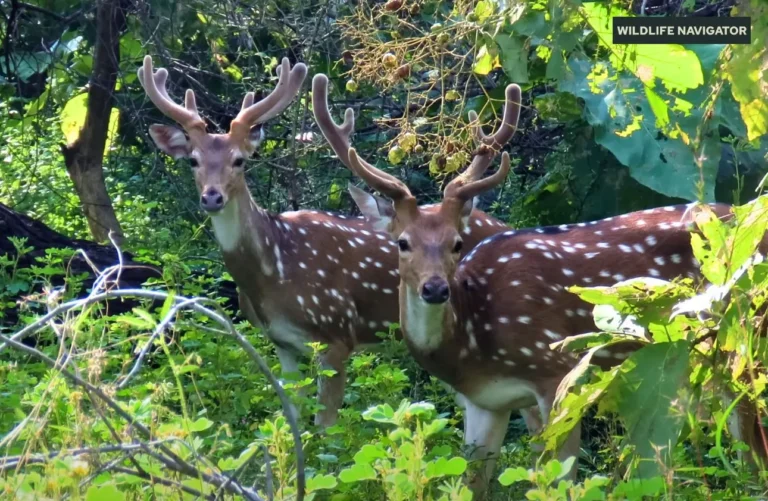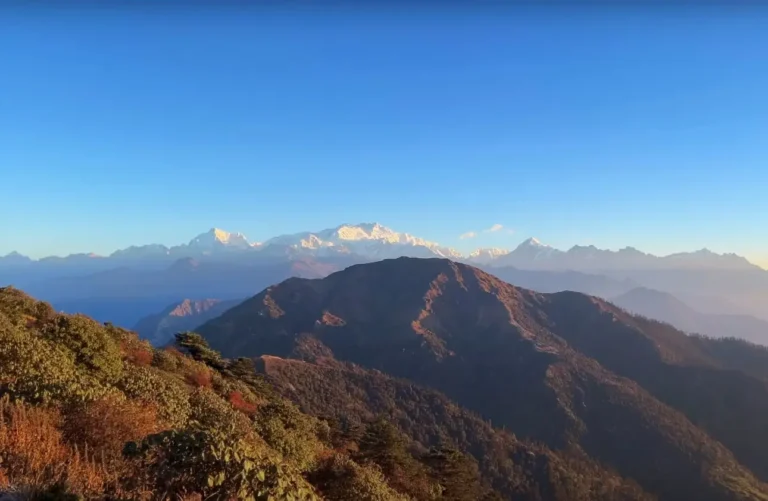Kamlang Tiger Reserve: Wildlife, Safari, Flora & Fauna in Arunachal Pradesh

Kamlang Tiger Reserve, nestled in the Lohit district of Arunachal Pradesh, is one of the youngest and least-explored tiger reserves in India. Declared a Tiger Reserve in 2016, it forms a vital part of India’s conservation network under Project Tiger. Spread across lush green forests and snow-fed rivers, Kamlang offers a pristine wilderness that remains largely untouched by mass tourism.
The reserve is named after the Kamlang River, which flows through its heart, nourishing its rich biodiversity and creating a thriving ecosystem for both flora and fauna. With its breathtaking landscapes, serene Glow Lake, and the presence of elusive tigers and other rare wildlife, Kamlang Tiger Reserve is not just a haven for nature enthusiasts but also a symbol of India’s continued commitment to wildlife conservation.
1. History and Establishment
Kamlang Tiger Reserve was officially declared the 50th tiger reserve in 2016. Before its designation, the area was already known for its dense forests, unique biodiversity, and spiritual landmarks like the sacred Parshuram Kund. Recognising its ecological significance and the presence of key wildlife species such as tigers, leopards, and elephants, the government included it under the ambit of Project Tiger to strengthen protection and conservation efforts.
The reserve covers an area of about 783 square kilometres, carved out from the larger Kamlang Wildlife Sanctuary that was originally established in 1989. Its establishment as a tiger reserve not only expanded India’s network of protected habitats but also highlighted the importance of Arunachal Pradesh as a biodiversity-rich state. The creation of Kamlang ensures that the fragile Himalayan ecosystem and its threatened species receive much-needed protection while also promoting eco-tourism in Northeast India.
2. Geography and Location
Kamlang Tiger Reserve is located in the Lohit district of Arunachal Pradesh, a region blessed with unparalleled natural beauty and cultural diversity. Spanning an area of around 783 square kilometres, the reserve lies in the Eastern Himalayas, forming an important ecological corridor that connects with Namdapha National Park on one side. This makes it a crucial landscape for the movement of large mammals like tigers, elephants, and leopards.
The terrain of Kamlang is a mix of rugged mountains, dense tropical forests, and river valleys, with elevations ranging from 500 meters to over 4,500 meters. The Kamlang River, from which the reserve takes its name, meanders through the forest, providing life to both wildlife and vegetation. Within its boundaries lies the enchanting Glow Lake, surrounded by pine and conifer forests at an altitude of 5,000 feet.
The climate here is typically subtropical to temperate, with heavy rainfall during the monsoon and pleasant winters, making October to April the best time to visit. Its remote setting, coupled with rich biodiversity, makes Kamlang stand out among the lesser-explored tiger reserves in India, offering both adventure and serenity to travellers.
3. Flora of Kamlang Tiger Reserve
Kamlang Tiger Reserve is a green paradise, boasting a wide range of forest types that reflect the altitudinal variation of the Eastern Himalayas. From lush tropical evergreen forests at the lower elevations to temperate and alpine vegetation at higher altitudes, the reserve is a treasure trove for botanists and nature lovers.
3.1 Major Forest Types
The reserve is primarily covered with tropical evergreen and semi-evergreen forests, interspersed with patches of subtropical pine forests. Higher reaches are marked with conifers and alpine meadows, offering a striking contrast in vegetation.
3.2 Dominant Plant Species
Kamlang is home to an incredible diversity of plants, including tall sal and teak trees, canes, and bamboo groves. It also shelters rare medicinal plants, aromatic herbs, and more than 60 species of orchids, which thrive in its moist and cool climate. The presence of ferns, lichens, and mosses further highlights the richness of this ecosystem.
This thriving vegetation not only sustains wildlife but also supports the traditional lifestyle of local communities who depend on forest resources. The unspoiled greenery of Kamlang makes it stand out as one of the most pristine protected areas in Northeast India.
4. Fauna of Kamlang Tiger Reserve
Kamlang Tiger Reserve is a haven for wildlife, with a rich mix of mammals, birds, reptiles, and aquatic species thriving in its dense forests and river valleys. The diverse altitudes and habitats support both Himalayan species and those typical of the tropical forests of Northeast India.
4.1 Mammals
The reserve is home to iconic predators like the Bengal tiger and the leopard, along with other large mammals such as the Indian elephant, gaur (Indian bison), and sambar deer. Smaller species like the clouded leopard, wild boar, civets, and primates also roam freely, contributing to the ecological balance of the forest.
4.2 Birds
Birdwatchers will find Kamlang equally rewarding. The forest resonates with the calls of hornbills, pheasants, barbets, and parakeets. Migratory birds also visit during the winter months, making the reserve a vibrant birding destination.
4.3 Reptiles and Amphibians
The wetlands and riverbanks are rich in reptilian life, including king cobras, pythons, lizards, and freshwater turtles. Amphibians such as frogs and toads thrive in the moist undergrowth, playing an important role in the food chain.
4.4 Aquatic Life
Fed by the Kamlang River and numerous streams, the reserve also shelters various species of freshwater fish, which in turn support otters and birds of prey.
Together, this impressive diversity makes Kamlang Tiger Reserve a critical stronghold for wildlife conservation in Arunachal Pradesh.
5. Attractions Inside and Around the Reserve
Kamlang Tiger Reserve is not only a wildlife haven but also a scenic destination with several natural and cultural attractions. Visitors can combine wildlife exploration with breathtaking landscapes and spiritual sites, making it a unique experience in Arunachal Pradesh.
5.1 Glow Lake
One of the most striking sights within the reserve is Glow Lake, perched at an altitude of around 5,000 feet. Surrounded by dense pine and conifer forests, the lake shimmers in the sunlight, offering picturesque views and a tranquil spot for nature lovers and photographers. It is also an important habitat for migratory birds.
5.2 Kamlang River
The Kamlang River flows through the heart of the reserve, creating fertile valleys and wetlands. The river not only sustains the flora and fauna but also provides opportunities for eco-tourism activities like birdwatching and nature photography. Its pristine waters are home to several fish species and aquatic animals.
5.3 Nearby Destinations
Visitors can also explore Parshuram Kund, a sacred Hindu pilgrimage site located near the reserve, attracting devotees especially during Makar Sankranti. Additionally, the reserve’s proximity to Namdapha National Park allows wildlife enthusiasts to extend their journey and experience some of India’s most biodiverse forests.
These attractions make Kamlang Tiger Reserve a destination that combines wildlife, natural beauty, and cultural heritage, offering an enriching experience for all types of travellers.
6. Safari, Entry Fee and Accommodation
Exploring Kamlang Tiger Reserve is an unforgettable experience, offering visitors the chance to witness its rich biodiversity and scenic landscapes. Safaris are the main way to explore the reserve safely while observing wildlife in their natural habitat.
6.1 Safari Options
Visitors can choose from jeep safaris or guided trekking trails. Jeep safaris are ideal for spotting tigers, leopards, elephants, and deer, while trekking allows a closer connection with the forest, birdwatching, and photographing flora and fauna. Expert forest guides accompany visitors, providing insights into the reserve’s ecosystem and wildlife behaviour.
6.2 Best Time for Safari
The October to April period is recommended, when weather conditions are pleasant and wildlife activity is higher. Early mornings and late afternoons are the most productive times for spotting animals. Monsoon months are generally avoided due to heavy rainfall and difficult terrain.
6.3 Entry Fee
- Indian Visitors: Approx. ₹200–₹300 per person (entry + safari charges)
- Foreign Tourists: Approx. ₹500–₹700 per person
- Jeep Safari: Additional ₹1,000–₹1,500 per vehicle depending on group size
- Guided Trekking: Charges vary depending on duration and guide services
6.4 Accommodation Options
Nearby forest rest houses, eco-camps, and homestays provide convenient lodging. Staying close to the reserve allows early access for safaris and a peaceful experience in nature.
Exploring Kamlang Tiger Reserve through organised safaris ensures safety, supports conservation, and gives visitors an authentic experience of one of Arunachal Pradesh’s most pristine protected areas.
7. How to Reach Kamlang Tiger Reserve
Kamlang Tiger Reserve, located in the Lohit district of Arunachal Pradesh, is relatively remote, which adds to its pristine charm. Visitors can reach the reserve by air, rail, or road, although careful planning is required due to limited connectivity.
7.1 By Air
The nearest airport is Dibrugarh Airport in Assam, approximately 170 km from the reserve. From there, visitors can hire taxis or take local buses to reach the reserve. Flights connect Dibrugarh to major cities like Guwahati, Delhi, and Kolkata.
7.2 By Rail
The closest railway station is also Dibrugarh, which connects to major cities in Assam and other parts of India. From the station, private taxis or buses can be hired to cover the remaining distance to Kamlang.
7.3 By Road
Kamlang is accessible via road through Miao town, which serves as the main gateway. State-run buses and private taxis operate from Dibrugarh and other nearby towns. The journey offers scenic views of rivers, hills, and forests, making it an enjoyable drive for nature lovers.
Travellers are advised to plan their visit carefully, keeping in mind that roads may be affected by monsoon rains. Staying overnight in nearby accommodations like forest rest houses or homestays in Miao can make the journey smoother.
8. Conservation Efforts and Challenges at Kamlang Tiger Reserve
Kamlang Tiger Reserve plays a crucial role in preserving the unique biodiversity of Arunachal Pradesh and supporting India’s wider network of protected areas. The reserve is managed under Project Tiger, focusing on the protection of tigers and their habitats, as well as conserving other endangered species such as elephants, leopards, and gaurs.
8.1 Conservation Efforts
- Anti-Poaching Measures: Regular patrols and surveillance help prevent poaching of tigers and other wildlife.
- Habitat Management: Forest departments actively maintain and restore habitats, including river valleys and forest clearings, to ensure a balanced ecosystem.
- Community Involvement: Local communities are engaged in conservation through eco-tourism initiatives, awareness programs, and employment opportunities as guides or staff.
- Scientific Research: Wildlife monitoring, camera traps, and biodiversity surveys help in tracking animal populations and assessing conservation needs.
8.2 Challenges
Despite these efforts, Kamlang faces several challenges:
- Human-Wildlife Conflict: Local villages sometimes experience crop damage or livestock loss from wandering wildlife.
- Illegal Logging and Resource Extraction: Unregulated activities can degrade habitats and threaten biodiversity.
- Limited Accessibility: Its remote location restricts eco-tourism and resources for effective management.
- Climate Change: Altered rainfall patterns and temperature shifts may impact the delicate Himalayan ecosystem.
Overall, sustained conservation efforts, combined with responsible tourism and community participation, are essential to safeguard Kamlang Tiger Reserve for future generations.
9. Travel Tips for Visitors
Visiting Kamlang Tiger Reserve requires some planning due to its remote location and protected status. Following these tips can make your trip safer, enjoyable, and responsible.
9.1 Entry Requirements
Since Arunachal Pradesh is a protected area, Indian and foreign tourists need to carry certain documents:
- Indian Citizens: Must carry a valid government ID (Aadhar card, Voter ID, or Passport).
- Inner Line Permit (ILP): Mandatory for all visitors, issued by the Arunachal Pradesh government. Tourists should obtain this in advance, either online or at designated offices.
- Foreign Tourists: Require a Protected Area Permit (PAP) along with a passport and visa.
9.2 What to Carry
- Light trekking gear and comfortable shoes
- Raincoat or waterproof clothing (especially during monsoon)
- Binoculars and camera for wildlife spotting
- Personal medicines and insect repellent
- Refillable water bottle to reduce plastic use
9.3 Safety and Conduct
- Follow all forest rules and instructions from guides
- Avoid littering; maintain the pristine environment
- Do not disturb wildlife or attempt to feed animals
- Stick to designated trails for safaris and treks
9.4 Best Practices
- Plan visits during October to April for pleasant weather and higher chances of wildlife sightings
- Book accommodations in advance, as options are limited
- Respect local communities and their customs
These travel tips ensure a safe, enjoyable, and eco-friendly visit to Kamlang Tiger Reserve while supporting ongoing conservation efforts.
10. Conclusion
Kamlang Tiger Reserve is a hidden gem in Arunachal Pradesh, offering a unique blend of rich biodiversity, scenic landscapes, and cultural heritage. From the flowing Kamlang River and serene Glow Lake to its dense forests teeming with tigers, elephants, and countless other species, the reserve embodies the beauty and ecological importance of India’s protected areas.
As part of India’s network of tiger reserves, Kamlang plays a crucial role in safeguarding endangered species while promoting responsible eco-tourism. Visiting the reserve not only provides unforgettable wildlife experiences but also highlights the importance of conservation, habitat protection, and community involvement.
For travellers seeking adventure, tranquillity, and a chance to witness wildlife in one of India’s least-explored regions, Kamlang Tiger Reserve offers a remarkable destination. By following guidelines, respecting local communities, and supporting eco-friendly practices, every visitor contributes to preserving this pristine wilderness for generations to come.





